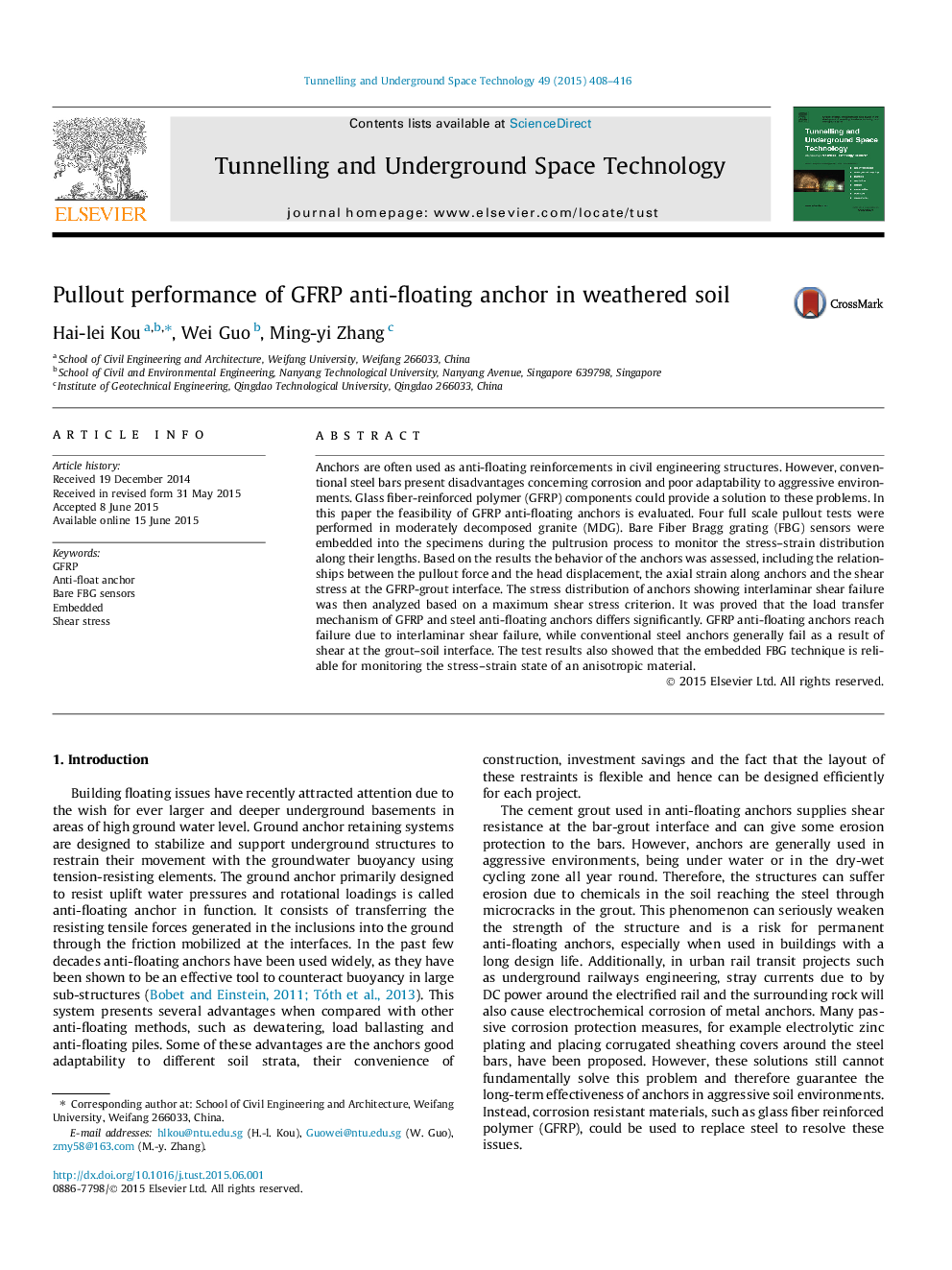| Article ID | Journal | Published Year | Pages | File Type |
|---|---|---|---|---|
| 6784085 | Tunnelling and Underground Space Technology | 2015 | 9 Pages |
Abstract
Anchors are often used as anti-floating reinforcements in civil engineering structures. However, conventional steel bars present disadvantages concerning corrosion and poor adaptability to aggressive environments. Glass fiber-reinforced polymer (GFRP) components could provide a solution to these problems. In this paper the feasibility of GFRP anti-floating anchors is evaluated. Four full scale pullout tests were performed in moderately decomposed granite (MDG). Bare Fiber Bragg grating (FBG) sensors were embedded into the specimens during the pultrusion process to monitor the stress-strain distribution along their lengths. Based on the results the behavior of the anchors was assessed, including the relationships between the pullout force and the head displacement, the axial strain along anchors and the shear stress at the GFRP-grout interface. The stress distribution of anchors showing interlaminar shear failure was then analyzed based on a maximum shear stress criterion. It was proved that the load transfer mechanism of GFRP and steel anti-floating anchors differs significantly. GFRP anti-floating anchors reach failure due to interlaminar shear failure, while conventional steel anchors generally fail as a result of shear at the grout-soil interface. The test results also showed that the embedded FBG technique is reliable for monitoring the stress-strain state of an anisotropic material.
Keywords
Related Topics
Physical Sciences and Engineering
Earth and Planetary Sciences
Geotechnical Engineering and Engineering Geology
Authors
Hai-lei Kou, Wei Guo, Ming-yi Zhang,
